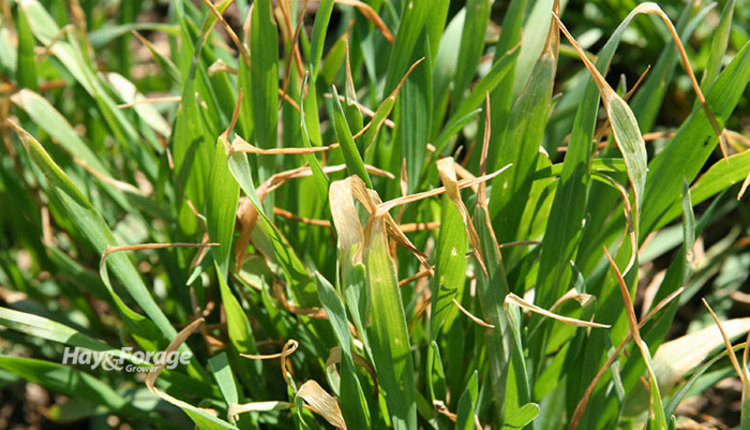
The cold front that swept across the country in late December caused frost damage in winter annuals, turning forage fields from green to yellow. That isolated weather event was just one of many freezes for some farmers, though, and evaluating frost damage will continue to be essential.
Kenny Simon and John Jennings, forage specialists with the University of Arkansas Extension, note species like winter wheat, cereal rye, annual ryegrass, and fescue are inherently winter hardy, but there are factors that influence their tolerance to the cold. For example, frost damage may be more extensive in dry soils than wet soils because moisture retains heat and keeps the surface temperature higher.
Forage growth stage can also impact the level of frost damage plants endure. The forage specialists say winterkill will be worse if forage is in stem elongation or reproductive stages during a deep freeze. In other words, crops planted in early September for fall grazing may be more susceptible to frost damage than crops planted in October.
“Severity of damage depends on variety and stage of growth when freezing temperatures occur,” the specialists state. “Well-tillered vegetative plants would be more tolerant than seedlings or plants that have initiated stem elongation.”
Forage species can play a role in frost damage, too. For instance, winter oat is less winterhardy than winter wheat or cereal rye, especially if it is not acclimated to freezing temperatures. Research from New York shows winter oat and spring oat that had not been exposed to the cold suffered from frost damage at 28°F. Further research suggests frost damage occured in winter oat and spring oat at 18°F and 14°F, respectively, after four weeks of cold acclimation.
Fall-seeded legumes like clover and alfalfa will likely survive a deep freeze if plants have at least three trifoliate leaves. These seedlings also have the added advantage of growing closer to the soil surface where temperatures are slightly warmer. Moreover, the specialists say legumes growing in mixed stand can avoid frost damage because grass forages help insulate the ground.
Replant damaged stands
Yellow top growth might just be a sign of frost burn on new leaves and may not necessarily indicate frost damage to the rest of the plant. Walk fields and check forage crowns to confirm what condition plants are in.
“If the crowns are still green and firm, the plants should survive and provide spring grazing,” the specialists say. “Frost-damaged top growth can be grazed to salvage the forage, but be careful with grazing immediately after a hard freeze because hoof traffic during or shortly after a freeze may increase damage,” they add.
If damage is more extensive, the specialists recommend planting annual ryegrass, winter oat, or spring oat in late February or early March. Replanting winter wheat or cereal rye in the spring is not advised in case temperatures aren’t low enough for these crops to become vernalized.

Amber Friedrichsen served as the 2021 and 2022 Hay & Forage Grower summer editorial intern. She currently attends Iowa State University where she is majoring in agricultural communications and agronomy.

